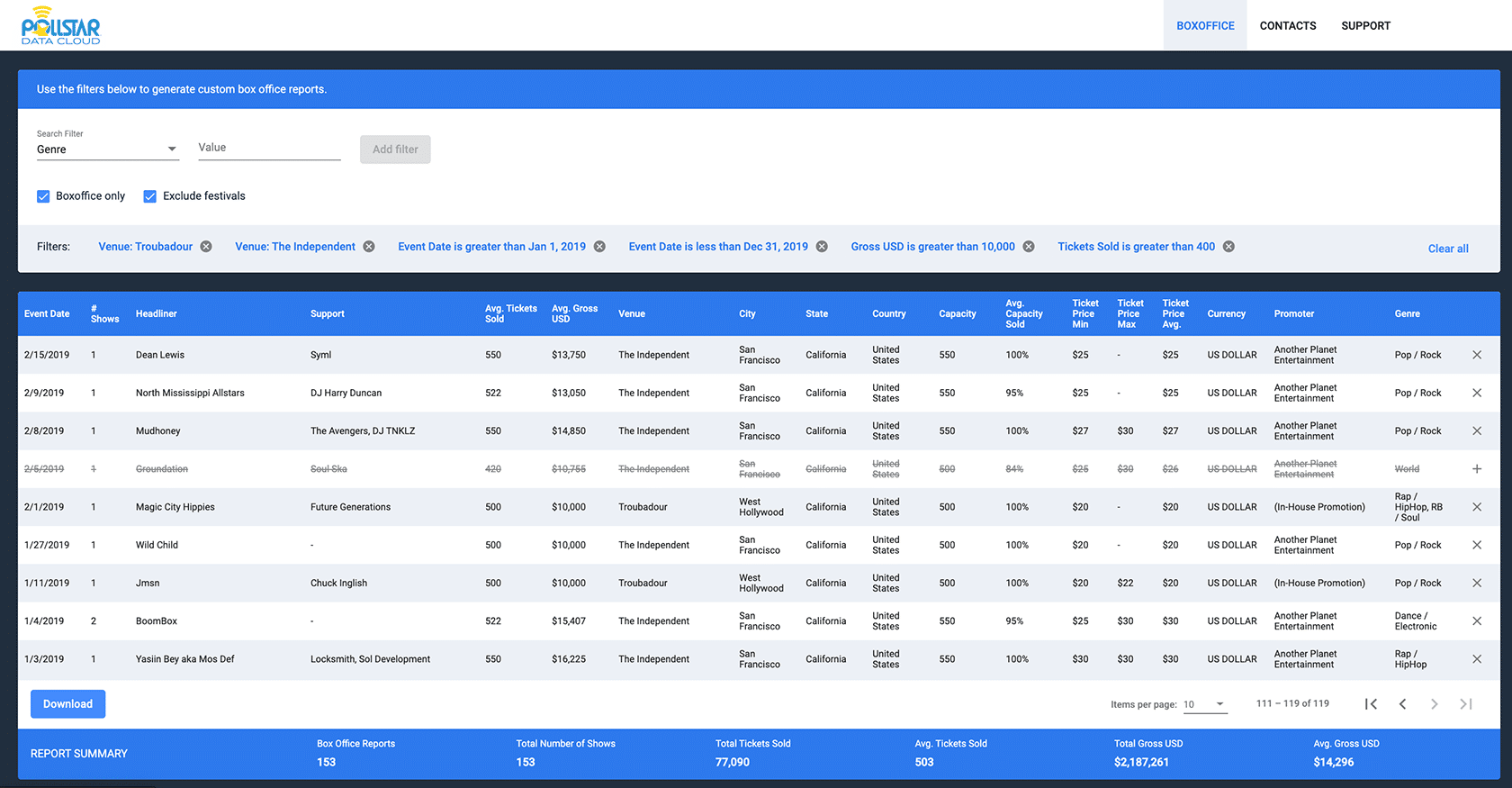



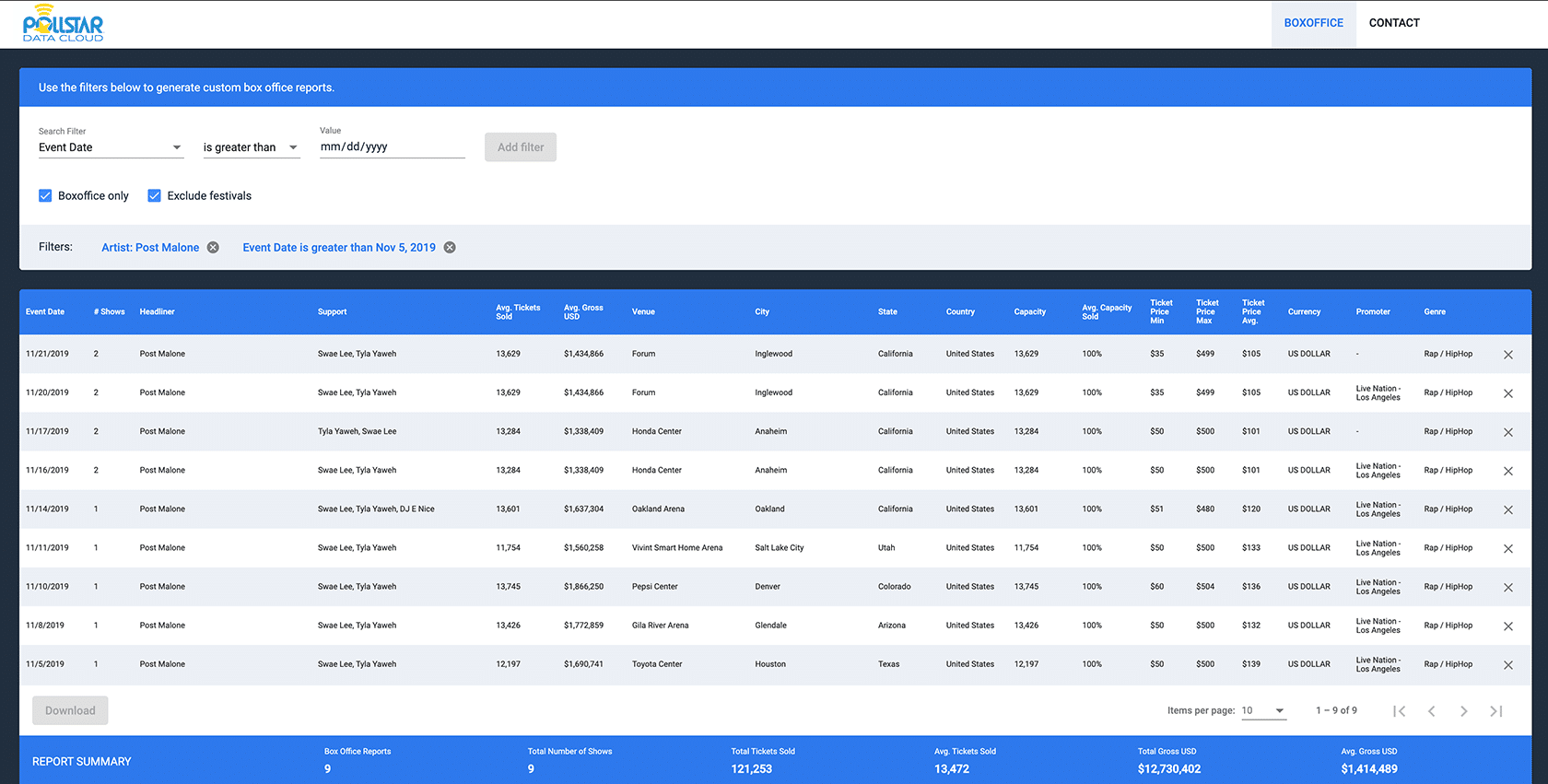
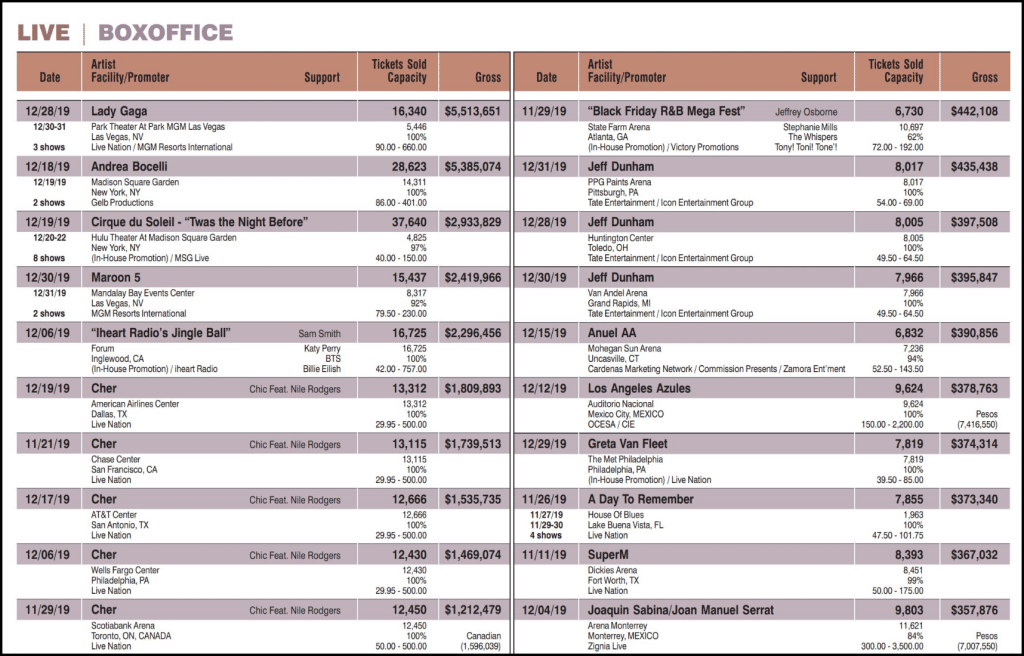
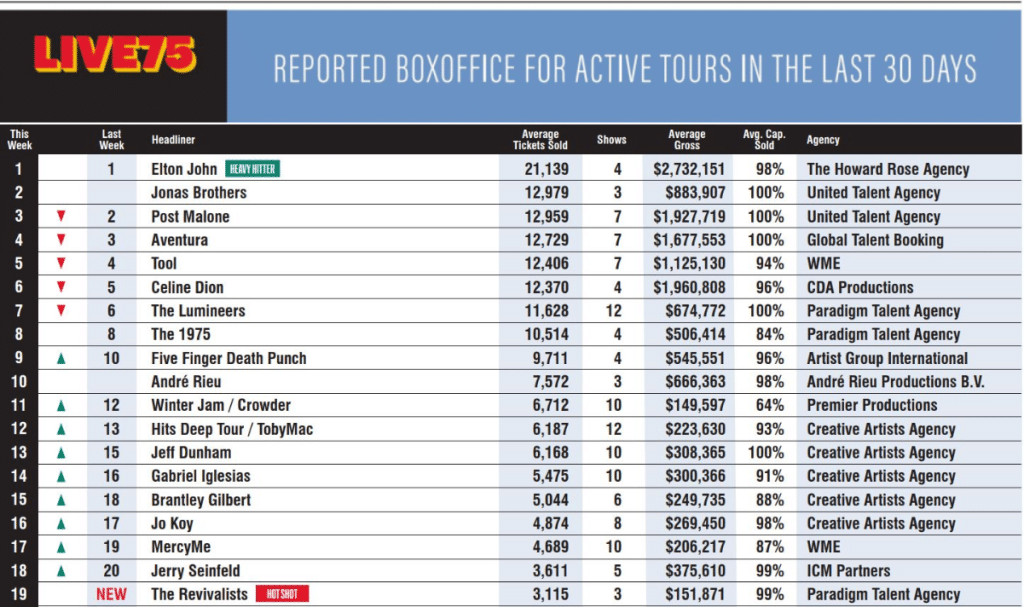
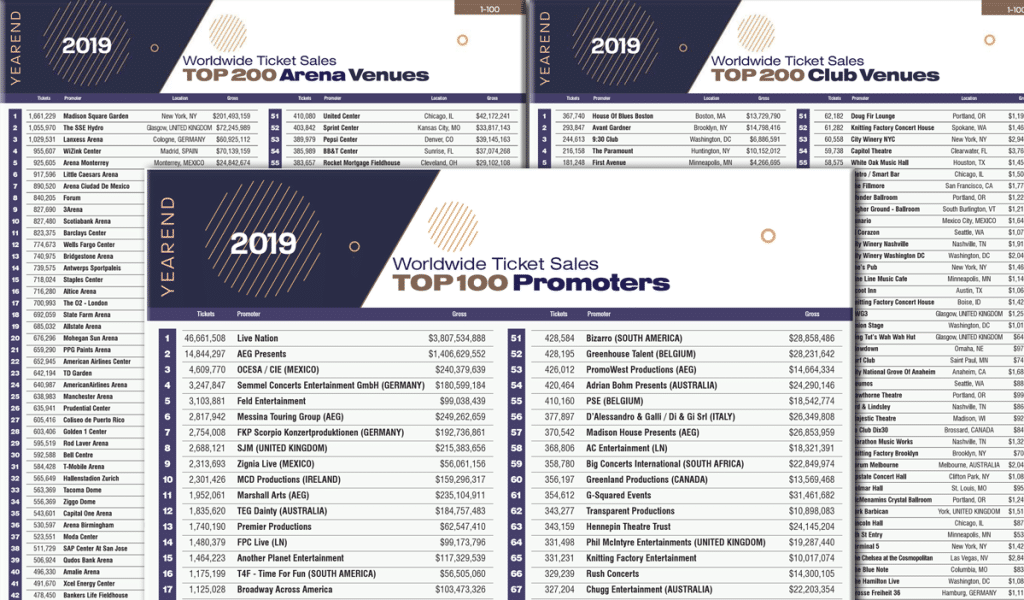
To purchase a single Tour History, please search for the artist or venue and navigate towards purchasing a Tour History.
Tour Histories are an invaluable tool for the modern concert business professional. Tour Histories give a distinct advantage in the concert marketplace, providing the power to negotiate a deal profitable for all parties involved in an event.
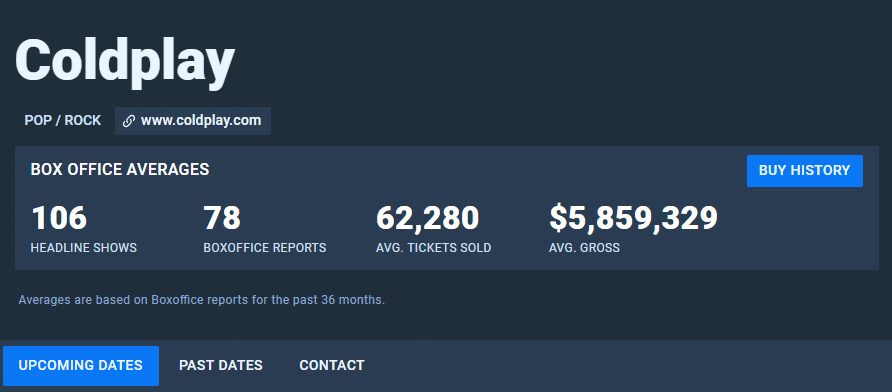
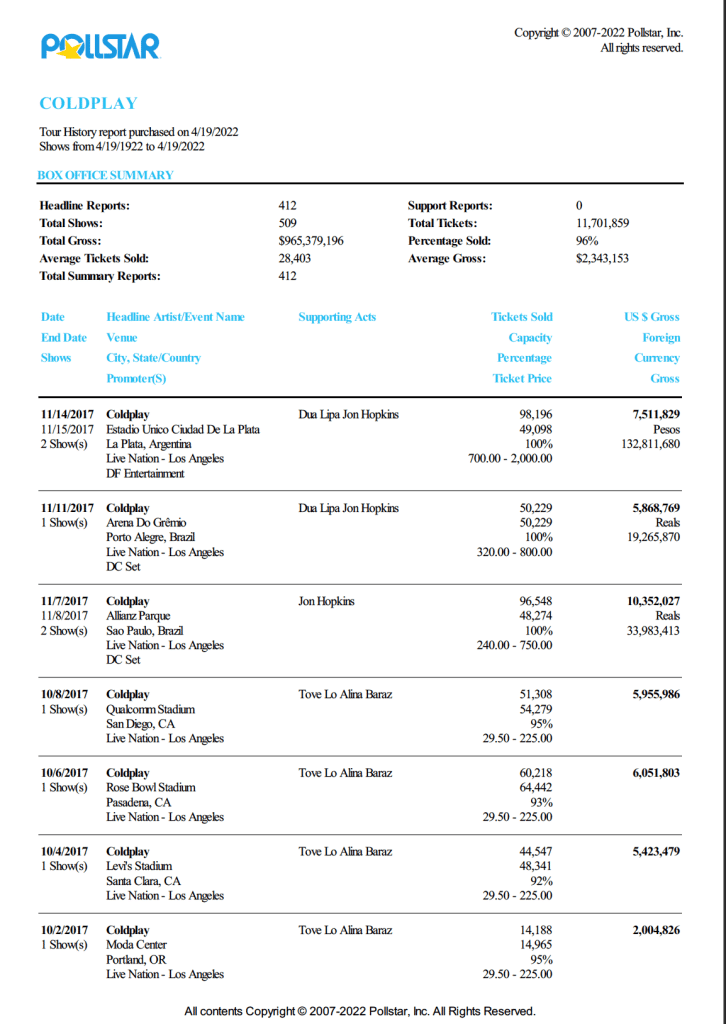
Historical ticket sales and concert grosses are some of the most valuable information for decision-making. Tour Histories provide this detail on all reported shows, and also include other important metrics like show capacity, capacity sell-through, ticket prices and more.
Pollstar accepts reports for any touring act that performed at any venue that has tickets for sale to the public. We publish statistics on sellouts, financial disasters and everything in between. Pollstar subscribers often run a tour history if they are just thinking of booking an artist. The successes and failures that the tour history details is the industry’s best indication of future success.